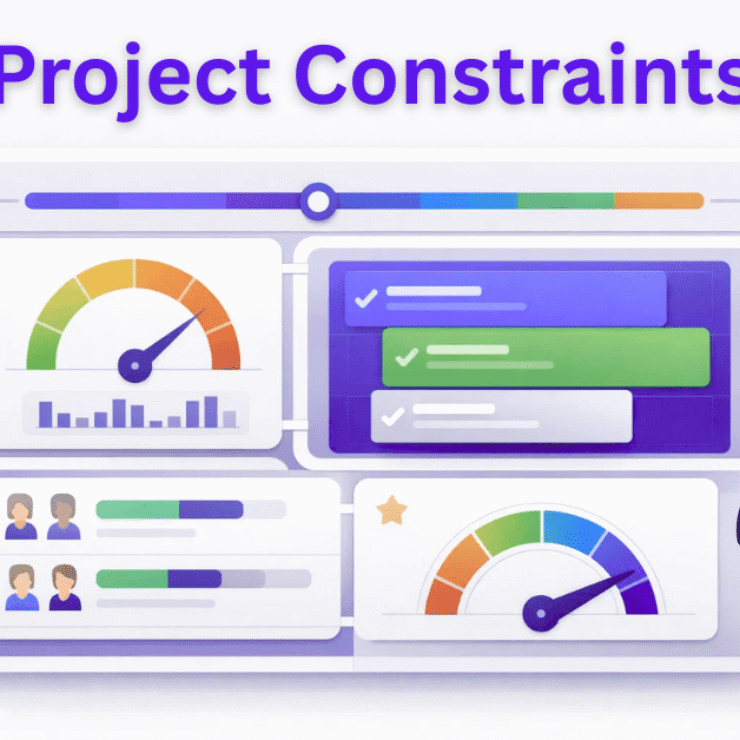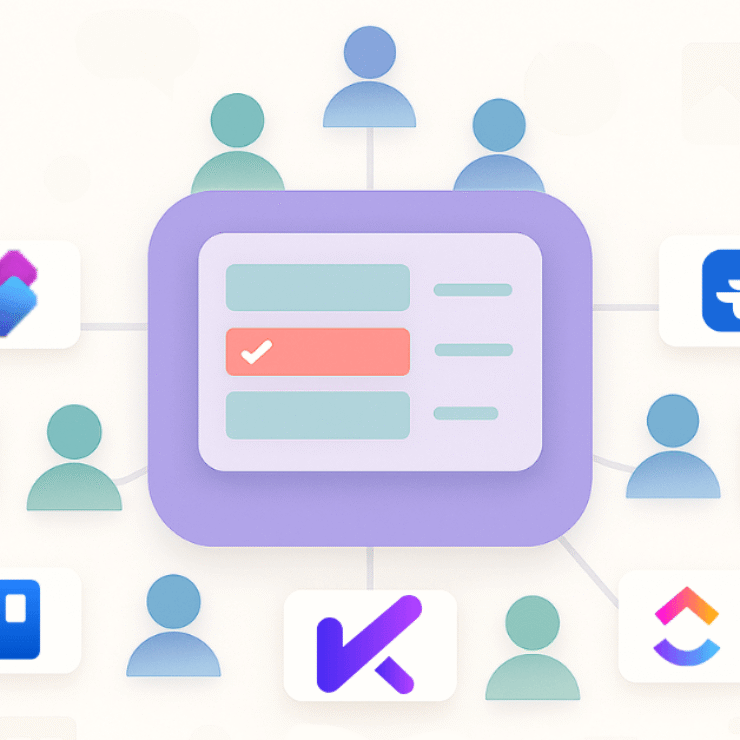That sinking feeling when a ‘minor’ delay on one task throws your entire project into chaos. Every project manager knows it. Deadlines get missed, budgets spiral, and stress levels skyrocket. It often feels like you’re managing a dozen different fires at once, never sure which one will burn the whole house down.
What if you could scientifically identify the exact sequence of tasks that dictates your project’s timeline? You can. It’s called the critical path method, and it’s one of the most powerful techniques in a project manager’s toolkit for achieving clarity and control.
In this definitive guide, we’re cutting through the complex jargon and intimidating formulas. We’ll show you exactly what the critical path method is, why it’s essential for modern project management, and provide a simple, step-by-step process to calculate it. By the end, you’ll be able to use the CPM in project management to deliver projects on time, every time.
This guide is based on proven principles outlined by the Project Management Institute (PMI) and decades of real-world project delivery, simplified for the modern manager.
Key Takeaways at a Glance
- What is Critical Path Method (CPM)? The Critical Path Method (CPM) is a project management technique that identifies the longest sequence of dependent tasks, which determines the shortest possible project duration.
- Why is it Important? It helps accurately predict timelines, prioritize crucial tasks, manage resources effectively, and mitigate risks before they derail your project.
- How is it calculated? By identifying all tasks, their dependencies, and their durations, you can map out project paths and find the longest one—the critical path.
- CPM vs. PERT: CPM is used for projects with predictable task durations (like construction), while PERT is for projects with high uncertainty (like R&D).
- Modern Solution: Project Management Tools automate the entire critical path method calculation, transforming a complex manual process into a simple, visual timeline.
What is the Critical Path Method (CPM) in Project Management?
At its core, the critical path method is a technique for modeling your project to find its most important timeline. The critical path itself is the longest sequence of dependent tasks that must be completed to finish the project.
It’s called “critical” for a simple reason: any delay to any task on this path will directly delay the entire project’s completion date.
Think of it like a cross-country road trip with mandatory stops. You might plan several routes for your team members. One might be driving the equipment truck, and another might be flying to set up a preliminary meeting. But the truck’s route, with all its mandatory stops for pickups and deliveries, is the longest. That longest, unchangeable route dictates the minimum time the entire trip will take. That’s your critical path.
So, what does CPM stand for in management? It stands for Critical Path Method.
This method forces you to distinguish between two types of tasks:
- Critical Tasks: These are the tasks that lie on the critical path. They have zero “float” or “slack,” meaning they have no room for delay. They require your closest attention.
- Non-Critical Tasks: These tasks have float or slack. Float is the amount of time a task can be delayed without affecting the project’s final deadline. This flexibility is key for resource management.
Understanding this distinction is the first step toward mastering your project schedule instead of just reacting to it.
Why is the Critical Path Method Still Crucial for Today's Projects?
In a world of Agile sprints and rapid iteration, you might wonder if a methodical technique like CPM is still relevant. The answer is a resounding yes. It’s more than just a tool for creating a calendar; it’s a strategic instrument for intelligent project leadership.
Here’s why the critical path method is a non-negotiable skill for modern managers:
- Accurate Forecasting: It moves your project timeline from a hopeful guess to a data-driven prediction. This is vital for building trust with stakeholders. According to a Project Management Institute (PMI) report, inaccurate time estimates are a primary cause of project failure for 25% of organizations. The critical path method directly combats this by grounding your schedule in reality.
- Laser-Focused Prioritization: In a sea of competing tasks, CPM acts like a lighthouse, instantly illuminating the tasks that absolutely cannot slip. It tells your team exactly where to focus their most intense efforts to keep the project on track.
- Proactive Risk Management: The critical path is also a map of your project’s biggest vulnerabilities. It shows you precisely where a single delay could trigger a catastrophic domino effect. This allows you to identify and monitor high-risk areas before they become full-blown crises.
- Optimized Resource Allocation: By identifying tasks with “float,” you know where you have scheduling flexibility. If a critical task runs into trouble and needs an extra developer, you can confidently pull one from a non-critical task, knowing you have a buffer. This makes your resource management dynamic and intelligent.
- Improved Stakeholder Communication: When a client or executive asks, “Why will this take six months?” you can move beyond a simple date. You can show them a logical, visual map of dependencies and explain why the timeline is what it is. This builds credibility and manages expectations effectively.
How to Calculate the Critical Path: A Simple 6-Step Guide
This is where many guides get lost in a forest of complex formulas like “EF = ES + t” and “LS = LF – t.” We’re going to skip that.
To make this real, let’s forget the abstract theory and walk through a common business project: Launching a New Feature for a Mobile App. We will use this single, consistent example to guide you through every step.
Step 1: Break Down the Work (List All Tasks)
First, you need to identify every task required to complete the project. This is often done using a Work Breakdown Structure (WBS), which is just a fancy term for a comprehensive task list. For our app feature launch, the list and estimated durations might look like this:
| Task ID | Task Description | Duration (Days) |
|---|---|---|
| A | Plan & Scope Feature | 10 |
| B | Design UI/UX Mockups | 15 |
| C | Develop Backend Logic | 20 |
| D | Develop Frontend Interface | 25 |
| E | Write Marketing Copy | 5 |
| F | Conduct QA Testing | 10 |
| G | Deploy to App Store | 2 |
Step 2: Identify Task Dependencies (Sequence the Work)
Next, you need to figure out the order of operations. A dependency is a relationship where one task cannot begin until another is completed. For our project, the dependencies are:
| Task | Depends On (Predecessor) |
|---|---|
| B | A |
| C | A |
| D | B |
| E | A |
| F | C and D |
| G | F |
You can’t design mockups (B) until you’ve planned the feature (A). You can’t start QA testing (F) until both the backend (C) and frontend (D) are developed.
Step 3: Draw the Network Diagram (Visualize the Flow)
Now, we turn our lists into a visual flowchart of the project. This network diagram shows each task as a node and the dependencies as arrows connecting them. It creates a map of your entire project from start to finish.
Step 4: Estimate Task Duration
This is a critical step we already performed in Step 1. It’s crucial that these estimates are as realistic as possible. Use historical data from past projects, consult with the team members doing the work, and build in buffers where necessary. A poor estimate at this stage will make your entire critical path analysis inaccurate.
Step 5: Calculate the Longest Path (The “Forward Pass”)
This sounds complex, but it’s just a simple addition. All you do is trace every possible path from the first task to the last, adding up the durations of the tasks along the way.
Let’s calculate the paths from our diagram:
- Path 1 (Backend Path): A → C → F → G
Calculation: 10 + 20 + 10 + 2 = 42 days
- Path 2 (Frontend Path): A → B → D → F → G
Calculation: 10 + 15 + 25 + 10 + 2 = 62 days
- Path 3 (Marketing Path): A → E
Calculation: 10 + 5 = 15 days (This path runs in parallel and finishes early).
Conclusion: The longest path through our project network is Path 2, at 62 days. This is our critical path. This means the shortest possible time to launch our new app feature is 62 days.
Step 6: Identify the Float (The “Backward Pass” Simplified)
Now that we know the project will take 62 days, we can find our “wiggle room.” Float (or slack) is how long a non-critical task can be delayed without pushing back that 62-day deadline.
Let’s look at Path 1 (the backend path), which takes 42 days.
- Calculation: 62 days (Project Duration) – 42 days (Path 1 Duration) = 20 days of float.
This is a powerful insight. It means the backend development team (Task C) has a collective 20 days of flexibility. If they hit an unexpected snag, it won’t immediately set the entire project on fire.
This reiterates the main point of the critical path method: Tasks on the critical path (A, B, D, F, G) have zero float. Any delay to them, even one day, will push our launch date back by one day.
Critical Path Method vs. PERT: What's the Real Difference?
The key difference lies in how they handle time.
- CPM (Critical Path Method): Is deterministic. It is used when task durations are well-understood and predictable. Think of projects that have been done many times before, like constructing a building or setting up a manufacturing line. CPM’s main focus is on the trade-off between time and cost.
- PERT (Program Evaluation and Review Technique): Is probabilistic. It is used for projects with high uncertainty, where task durations are just estimates. This is common in research and development, aerospace, or creating brand-new technology. PERT uses three time estimates (optimistic, pessimistic, and most likely) to calculate an expected duration, focusing heavily on the probability of meeting deadlines.
| Feature | Critical Path Method (CPM) | Program Evaluation & Review Technique (PERT) |
|---|---|---|
| Focus | Time/Cost trade-off, finding the most efficient path | Meeting deadlines under uncertainty |
| Task Times | Deterministic (one single, predictable estimate) | Probabilistic (three estimates: optimistic, likely, pessimistic) |
| Use Cases | Construction, manufacturing, predictable IT projects | R&D, new technology development, defense projects |
| Orientation | Activity-Oriented (focuses on the tasks themselves) | Event-Oriented (focuses on reaching milestones) |
Forget the Manual Math: Automating the Critical Path with Project Management Software
As you can see, calculating the critical path method manually is possible for a simple example. But imagine doing that for a project with 100+ tasks and complex dependencies. The process becomes incredibly time-consuming, prone to human error, and nearly impossible to update when things change. This is where modern project management software becomes indispensable. It automates this entire process, giving you instant clarity and strategic control without touching a single manual formula.
Here’s how a complex process becomes effortless:
Step 1: Add Your Tasks and Durations
Quickly list all your project tasks and their estimated durations in a simple, intuitive interface.
Step 2: Link Dependencies with a Click
Instead of drawing diagrams, simply drag and drop to connect dependent tasks on a visual Gantt chart. Project management software instantly understands the sequence of your project.
Step 3: Instantly Visualize Your Critical Path
With your tasks and dependencies set, simply click a button. Project management software analyzes all possible paths in milliseconds and automatically highlights your critical path on the Gantt chart.
In under a few minutes, project management software does what would take hours of manual work. You can see your critical path, identify risks, and share a clear, visual timeline with your team and stakeholders, all in one place.
From Chaos to Clarity
The critical path method is more than just a scheduling algorithm; it’s a strategic framework for seeing your project with perfect clarity. It empowers you to move from reactive problem-solving to proactive, strategic planning. By understanding the sequence of tasks that truly drives your timeline, you gain control over deadlines, resources, and risks.
You’ve learned the theory and seen how tedious the manual process can be. Ready to see your own project’s critical path in seconds?
Start your free trial of Karya Keeper today and transform how you manage project timelines.


